 |
King of Chemicals Manufacturers |
Specifications, Properties, Uses, SDS of Polydextrose USP NF FCC Food Grade Manufacturer Supplier Exporter Wholesale & Small Packs, CAS Number 68424-04-4. |
|
| King of Chemicals has several associated companies having accreditations like cGMP, GLP - FDA Approved Good Manufacturing Practice and Good Laboratory Practice of WHO standard, ISO-9001, ISO-14001, ISO/IEC 17025, ISO ISO-45000, HACCP, FSSC 220000, FSSAI, "REACH" Registered, Kosher & Halal Certified. e-CTD and DMF support can be made available if needed. We offer USP NF BP Ph Eur EP IP JP Analytical Reagent FCC Food Grade Chemicals & Nutraceuticals. | |
        |
|
Muby Chem Pvt. Ltd. is a several decades old group of companies, engaged in manufacturing, supplying, distributing, wholesale supplies of Polydextrose USP NF FCC Food Grade for actual users, including retail or small pack supplies for research and development work.
We supply fine and speciality chemicals, pharmaceutical excipients, mineral fortifiers in chemically pure, analytical reagent grade, IP BP USP Ph Eur EP JP and other pharmaceutical grade monograph including FCC Food grade chemicals and Nutraceuticals at best prices. We and/or our associated units have all the facilities to supply as per cGMP standard observing good manufacturing practice and good laboratory practice. We can assure low microbial count and also offer a test certificate for the same. We maintain warehouses across USA, India, and UAE. Our group exports to USA, Canada, Mexico, Argentina, Brazil, Chile, Korea, Malaysia, Thailand, Indonesia, Europe, and several other parts of the world. We supply in wholesale container loads to small pack of few grams. Solid products may be specified for it size and shape as desired by the buyer.


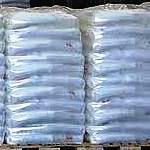

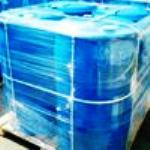
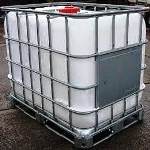
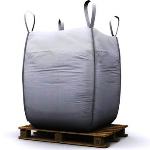
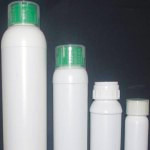
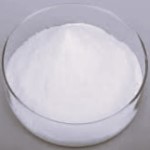
Polydextrose CAS Number 68424-04-4
For Properties Specifications Uses of Polydextrose Click Properties, Specifications, Uses, Price, Process of Polydextrose Manufacturer.
For For SDS MSDS Sheet of Polydextrose Click SDS Safety Data Sheet MSDS Sheet of Polydextrose Manufacturer.
The Properties, Specifications, Monograph and Uses of Polydextrose:
Polydextrose is frequently used as an ingredient in low-carb, sugar-free, and diabetic cooking recipes. It is also used as a humectant, stabilizer, and thickening agent. Polydextrose is a form of soluble fiber and has shown healthful prebiotic benefits when tested in animals. It contains only 1 kcal per gram and, therefore, can help reduce calories. As a pharmaceutical excipient, polydextrose is mainly used in the production of solid dosage forms.
Specifications of Polydextrose USP NF Grade:
CAS 68424-04-4
DEFINITION
Polydextrose is a randomly branched polymer prepared by melting and subsequent condensation of the ingredients, which consist of approximately 90 parts dextrose, 10 parts sorbitol, and up to 1-part citric acid or 0.1-part phosphoric acid. The 1,6-glycosidic linkage predominates in the polymer, but other linkages are present. It contains NLT 90.0% of dextrose polymer units, calculated on the anhydrous and ash-free basis. It contains small quantities of free dextrose, sorbitol, and 1,6-anhydro-d-glucose (levoglucosan), with traces of citric acid or phosphoric acid.
IDENTIFICATION
A. To 1 drop of a solution (1 in 10), add 4 drops of 5% phenol solution, then rapidly add 15 drops of sulfuric acid TS: a deep yellow to orange color is produced.
B. With vigorous swirling, add 1 mL of acetone to 1 mL of a solution (1 in 10): the solution remains clear.
C. With vigorous swirling, add 2 mL of acetone to the solution obtained in Identification test B: a heavy, milky turbidity develops immediately.
D. To 1 mL of a solution (1 in 50), add 4 mL of alkaline cupric citrate TS. Boil vigorously for 2–4 min. Remove from heat and allow the precipitate (if any) to settle: the supernatant is blue or blue-green.
Residue on Ignition: NMT 0.3%
Limit of Lead: To pass the test.
Procedure 1: Limit of 5-Hydroxymethylfurfural and Related Compounds: To pass the test.
Procedure 2: Limit of Monomers: To pass the test.
Molecular Weight Limit: To pass the test.
Acceptance criteria: No measurable peak above a molecular weight of 22,000 is found.
pH: 2.5 to 5.0, in a solution (1 in 10)
Water Determination: NMT 4.0%. Use a mixture of Hydranal solvent and Hydranal formamide dry (2:1) as a solvent. Perform the titration at 50C in a jacketed beaker.
Packaging and Storage: Preserve in tight, light-resistant containers. Store in a cool and dry place.
Polydextrose FCC Food Grade:
INS: 1200 CAS 68424-04-4
DESCRIPTION
Polydextrose occurs as an off white to light tan solid. It is a randomly bonded polymer prepared by the condensation of a melt that consists of approximately 90% D-glucose, 10% sorbitol, and 1% citric acid or 0.1% phosphoric acid on a weight basis. The 1,6-glycosidic linkage predominates in the polymer, but other possible bonds are present. The product contains small quantities of free glucose, sorbitol, and Danhydroglucoses (levoglucosan), with traces of citric acid or phosphoric acid. It may be partially reduced by transition metal catalytic hydrogenation in an aqueous solution. It may be neutralized with any food-grade base and decolorized and deionized for further purification. It is very soluble in water.
Function Bulking agent; humectant; texturizer.
REQUIREMENTS
Identification:
A. Add 4 drops of 5% aqueous phenol solution to 1 drop of a 1:10 aqueous solution, then rapidly add 15 drops of sulfuric acid. A deep yellow to orange color appears.
B. While vigorously swirling (vortex mixer), add 1.0 mL of acetone to 1.0 mL of a 1:10 aqueous solution. The solution remains clear. Retain this solution for Identification Test C.
C. While vigorously swirling, add 2.0 mL of acetone to the solution from Identification Test B. A heavy, milky turbidity develops immediately.
D. Add 4 mL of alkaline cupric citrate TS to 1 mL of a 1:50 aqueous solution. Boil vigorously for 2 to 4 min. Remove from heat, and allow the precipitate (if any) to settle. The supernatant liquid is blue or blue-green.
Assay: Not less than 90.0% polymer, calculated on the anhydrous, ash-free basis.
5-Hydroxymethylfurfural and Related Compounds: Not more than 0.1%, calculated on the anhydrous, ash-free basis.
Lead: Not more than 0.5 mg/kg.
Molecular Weight Limit: Passes test.
Monomers: D-Anhydroglucoses: Not more than 4.0%, calculated on the anhydrous, ash-free basis; Glucose and Sorbitol: Not more than 6.0%, calculated on the anhydrous, ash-free basis.
Nickel: Not more than 2 mg/kg for hydrogenated Polydextrose.
pH of a 10% Solution: Untreated Polydextrose: Between 2.5 and 7.0; Neutralized or Decolorized Polydextrose: Between 5.0 and 6.0.
Residue on Ignition: Untreated Polydextrose: Not more than 0.3%; Neutralized or Decolorized Polydextrose: Not more than 2.0%.
Water Not more than 4.0%.
The MSDS-SDS Hazard Statement of Polydextrose:
Polydextrose SDS, Safety Data Sheet
MSDS Sheet, Material Safety Data Sheet 10-Jul-22
Section 1: Chemical Product and Company Identification
Product Name & Other Names: Polydextrose.
CAS Number: 68424-04-4
EINECS EC Code: NA
Relevant uses and uses advised against (if any): Industrial Manufacturing.
Section 2: Hazards Identification
GHS, Globally Harmonized System Classification in accordance with 29 CFR 1910
Hazard Class and Category Code(s), Regulation (EC) No 1272/2008 (CLP)
Not a hazardous substance or mixture according to Regulation (EC) No. 1272/2008.
This substance is not classified as dangerous according to Directive 67/548/EEC.
Labeling Regulation EC 1272/2008 (CLP) & GHS
GHS Label Elements NONE |
Signal Word: None
Precautionary statements:
P261: Avoid breathing dust/fume/gas/mist/vapors/spray.
P262: Do not get in eyes, on skin, or on clothing.
P281: Use personal protective equipment as required.
P302+P352: IF ON SKIN: Wash with plenty of soap and water.
P304+P340: IF INHALED: Remove victim to fresh air and keep at rest in a position comfortable for breathing.
P305+P351+P338: IF IN EYES: Rinse cautiously with water for several minutes. Remove contact lenses, if present and easy to do. Continue rinsing.
P337+313: If eye irritation persists get medical advice/attention.
Section 3: Composition and Information on Ingredients
Product Name & Other Names: Polydextrose.
CAS Number: 68424-04-4
EINECS EC Code: NA
Section 4: First Aid Measures
Always seek medical advice after the first aid treatment.
Skin: Rinse with water. Soap may be used. Seek Medical Aid.
Eyes: Wash eyes with plenty of water for at least 15 minutes, lifting lids occasionally. Seek Medical Aid.
Inhalation: Remove to fresh air. If not breathing, give artificial respiration. If breathing is difficult, give oxygen.
Ingestion: If swallowed, induce vomiting immediately after giving two glasses of water. Never give anything by mouth to an unconscious person.
Section 5: Fire and Explosion Data
Flammability of the Product: Non-flammable.
Products of Combustion: Oxides of Carbon.
Fire Fighting Media and Instructions: Use water spray, alcohol-resistant foam, dry chemical, or carbon dioxide. Wear self-contained breathing apparatus for firefighting if necessary.
Extinguishing Media Not recommended: Avoid using solid water jet as it may scatter the fire.
Special Information: In the event of a fire, wear full protective clothing and NIOSH-approved self-contained breathing apparatus with full face piece operated in the pressure demand or other positive pressure mode. At high temperatures under fire conditions, it may produce toxic or irritating fumes.
Section 6: Accidental Release Measures
Personal precautions, protective equipment, and emergency procedures: Avoid breathing dust/fumes/gas/mist/vapors/spray. Use individual protective equipment (waterproof boots, suitable protective clothing, safety glasses, etc.). Restrict unprotected personnel from the area.
Environmental precautions: Do not let the product enter drains, soil, or water sources.
Methods and materials used for containment cleanup procedures and Storage:
Small Spill: Use appropriate tools to put the spilled solid in a convenient waste disposal container.
Large Spill: Do not inhale dust, vapors, mist, or gas. Avoid dust formation. Contain spilled material. Cover with an inert, non-combustible absorbent material, (e.g., sand, earth, diatomaceous earth, vermiculite). Use a shovel to put the material into a convenient waste disposal container.
Section 7: Handling and Storage
Precautions for safe handling: Apply according to good manufacturing and industrial hygiene practices. Ensure proper ventilation. In case of insufficient ventilation, wear suitable respiratory equipment. Wash thoroughly after handling. Do not drink, eat, or smoke while handling. Avoid contact with skin, eyes, and clothing. Minimize dust generation. Avoid breathing dust/fumes/gas/mist/vapors/spray. Keep container tightly closed. Avoid ingestion and inhalation. Use individual protective equipment (waterproof boots, suitable protective clothing, safety glasses, etc.).
Conditions for safe storage, including any incompatibilities: Store in cool, dry, and ventilated area away from heat sources and protected from sunlight in tightly closed original container. Keep air contact to a minimum. Store protected from heat, sparks and ignition sources and incompatible materials. Avoid inhalation of dust/mist/vapor. Do not store with incompatible materials like strong oxidizing agents.
Section 8: Exposure Controls/Personal Protection
Engineering Controls: Use process enclosures, local exhaust ventilation, or other engineering controls to keep airborne levels low.
Ventilation System: A system of local and/or general exhaust is recommended to keep employee exposures as low as possible.
Personal Respirators (NIOSH Approved): For conditions of use where exposure to dust or mist is apparent and engineering controls are not feasible, a particulate respirator may be worn.
Skin Protection: Wear protective gloves and clean body-covering clothing.
Eye Protection: Use chemical safety goggles and/or full-face shield where dusting or splashing of solutions is possible. Maintain eye wash fountain and quick-drench facilities in work area.
Other Control Measures: Maintain good housekeeping in work area. Dust deposits on floors and other surfaces may pick up moisture and cause the surfaces to become slippery and present safety hazards. Handle in accordance with good industrial hygiene and safety practice.
Section 9: Physical and Chemical Properties
Physical state and appearance: Solid white powder or crystals.
Odor: No data available.
Odor threshold: No data available.
pH: less than 7.
Relative density: No data available.
Melting point/freezing point: Melting point/range: 110 - 130C
Initial boiling point and boiling range: No data available.
Flash point: No data available.
Auto-ignition temperature: No data available.
Decomposition temperature: No data available.
Upper/lower flammability or explosive limits: No data available.
Vapor pressure: No data available.
Vapor density: No data available.
Evaporation rate: No data available.
Flammability (solid, gas): No data available.
Partition coefficient: n-octanol/water: No data available.
Solubility: Soluble in water.
Viscosity: No data available.
Section 10: Stability and Reactivity Data
Stability: It is stable in room temperature in closed containers under normal storage & handling.
Incompatibility with various substances: Avoid high temperatures, sparks, open flames, and moisture. Avoid contact with strong oxidizing agents.
Polymerization: Will not occur.
Section 11: Toxicological Information
LD50 Oral - No data available.
Carcinogenicity: No component of this product present at levels greater than or equal to 0.1% is identified as possible or confirmed human carcinogen by IARC, ACGIH, OSHA and NTP.
Teratogenic Effects: No data available.
Mutagenic Effects: No data available.
Developmental Toxicity: No data available.
Reproductive Effects: No data available.
Section 12: Ecological Information
Toxicity to fish: No data available.
Persistence and Degradability: No data available.
Mobility: No data available.
Bioaccumulation/ Accumulation: No data available.
Results of PBT and vPvB assessment: No data available for assessment.
Section 13: Disposal Considerations
Waste Disposal: Waste must be disposed of in accordance with federal, state, and local environmental control regulations.
Section 14: Transport Information
DOT USA, TDG Canada & ADR/RID Europe: Not controlled.
IMDG/IMO & IATA/ICAO: Not controlled.
Section 15: Other Regulatory Information
USA Regulations:
SARA 311/312 Hazards: See section 2.
California Prop 65: Not listed.
Section 16 - Additional Information
Disclaimer:
Our company provides this SDS information contained herein in good faith but makes no representation as to its comprehensiveness or accuracy. This MSDS sheet is intended only as a guide to the appropriate precautionary handling of the material by a professionally trained person using this product. Individuals receiving the information must exercise their independent judgment in determining its appropriateness for a particular purpose.

Polydextrose Manufacturers, Suppliers, Exporters, Wholesalers:
King of Chemicals manufacturers

Plot No. 2900/46&47 + 2900/163to167, GIDC, Ankleshwar, Dist. Bharuch, India
India, USA, UAE
TEL: (Office) 91-22-23774610, 91-22-23723564
e-mail: info@kingofchemicals.com
Copyright and Usual Disclaimer is Applicable --- April 4, 2025
If I give you “My Word” Nobody can undo it.
If I sign an “Agreement” my Lawyer will undo it
Our products are for industrial and laboratory use only. The user must test the material before use. We are not dispensing chemists or druggist and do not offer over the counter type (OTC) products for medical use by individuals.
We and our associates manufacture pure chemicals surpassing Monograph Specifications of Analytical Reagent Standards, British & European Pharmacopoeia BP Ph Eur EP Standard, US Pharmacopoeia USP NF Standard, Indian Pharmacopoeia IP Standard, Japan Pharmacopoeia JP Standard, FCC Food Grade Standard. |
|